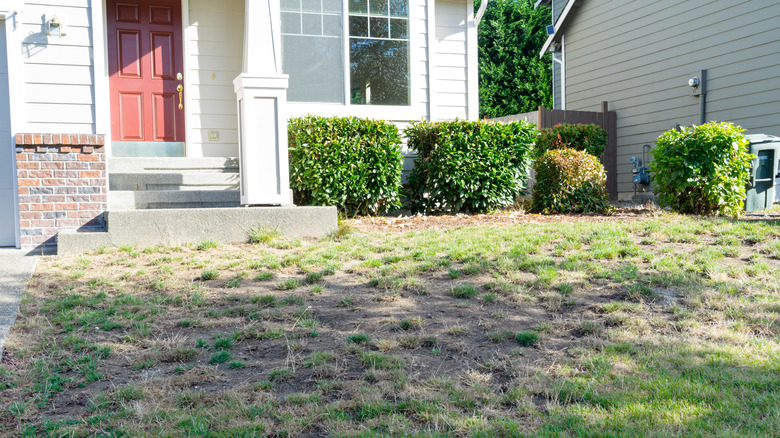Billbugs are a type of weevil insect that inflicts damage on lawns. These small beetles lay their eggs in grass stems, and the resulting larvae feed on the grass roots, weakening and destroying the blades. As the larvae grow, they cause extensive turf damage, leading to brown patches, thinning grass, and even large dead areas. Billbugs can be particularly harmful because their feeding behavior remains unnoticed until significant damage occurs. As a result, the lawn’s overall health and appearance suffer, requiring costly and time-consuming efforts to repair and restore the affected areas.
There are a number of signs that can indicate a billbug infestation such as yellowing grass, damaged blades, and the presence of adult billbugs. If you suspect a billbug infestation based on these signs, it is essential to take immediate action to prevent further damage. Contact a professional lawn care service or an entomologist for proper identification and treatment options. Early intervention with appropriate insecticides and proper lawn maintenance can help mitigate the impact of billbugs and promote the recovery of your lawn.
Signs there are billbugs in your lawn

Identifying a billbug infestation in your lawn is crucial for early intervention and effective pest control. One of the earliest signs of a billbug infestation is the appearance of yellow or brown patches in the lawn. As the billbug larvae feed on the grass roots, the affected areas start to thin out, leading to a weakened and unhealthy appearance. If you notice significant sections of your lawn turning brown and dying, it may be an indication of an advanced infestation. In this case, lift up patches of damaged turf and examine the soil beneath. Billbug larvae resemble white, C-shaped grubs with brown heads. Finding these grubs in the soil confirms a billbug infestation.
The billbug larvae feed on the grass stems and blades, causing irregular notches or chewed edges. If you notice damaged grass blades, inspect the area for other signs of infestation. As the billbug larvae continue to consume the grass roots, the lawn may become spongy and start to wilt, even when adequately watered. This is a clear indication of root damage caused by the pests. Another clear sign of infestation is finding adult billbugs, which are small beetles about a quarter to half an inch long with a distinct elongated snout. They have a hardened shell with coloration ranging from brown to black.
Best ways to eradicate billbugs
Eradicating billbugs from your lawn requires a combination of preventive measures and targeted treatments. Maintaining a healthy lawn is the first line of defense against billbugs. Regular mowing, appropriate watering, and proper fertilization will help strengthen the grass, making it more resilient to billbug damage. Regularly inspect your lawn for signs of billbug infestations, especially during late spring and early summer when their activity is highest. Promptly addressing any signs of infestation can prevent it from spreading and causing significant damage.
For minor infestations, physical removal of the billbug larvae by handpicking or dethatching the affected areas can be effective. However, this method is only practical for small lawns or localized infestations. Introducing natural predators like parasitic nematodes or beneficial insects that feed on billbug larvae, such as ground beetles, can help reduce their population. In severe infestations, targeted insecticides formulated specifically for billbug control can be applied. Be sure to follow the manufacturer’s instructions and use insecticides safely. Spot treatments rather than whole-lawn applications are often sufficient and reduce environmental impact.
After treating the infested areas, overseed the damaged patches to aid in the recovery process. Reseeding will help fill in the bare spots left by the billbug damage. In areas with a history of billbug problems, preventive insecticide treatments can be applied before their peak activity period. This approach aims to prevent infestations before they start and is best used in combination with other control methods.